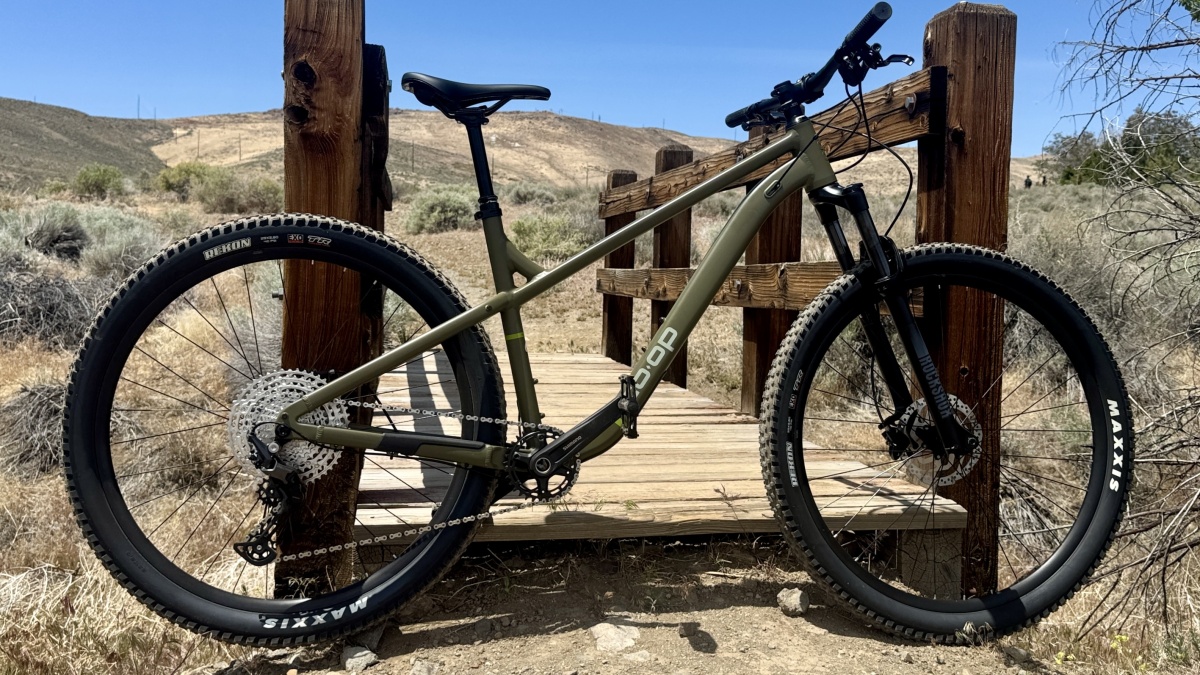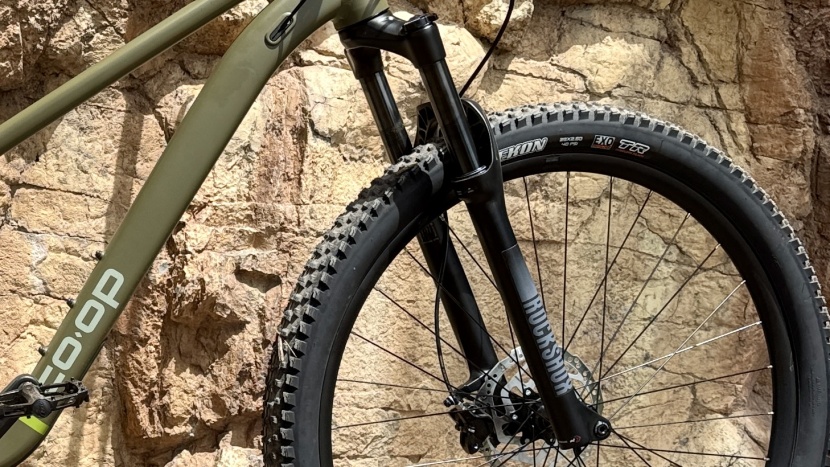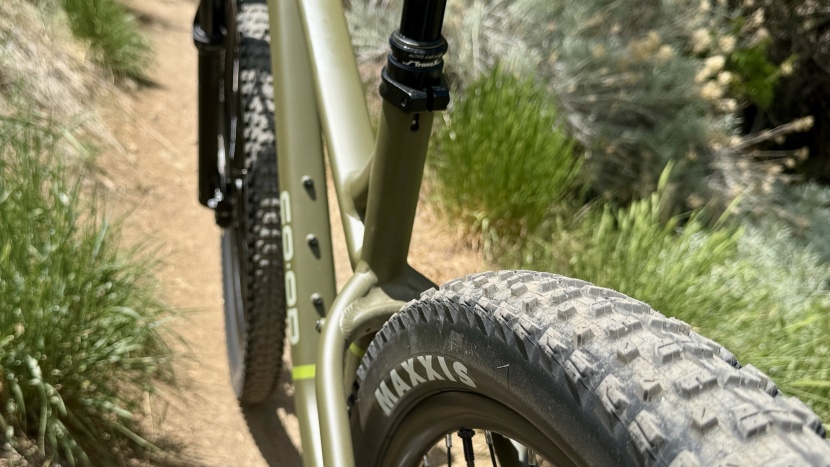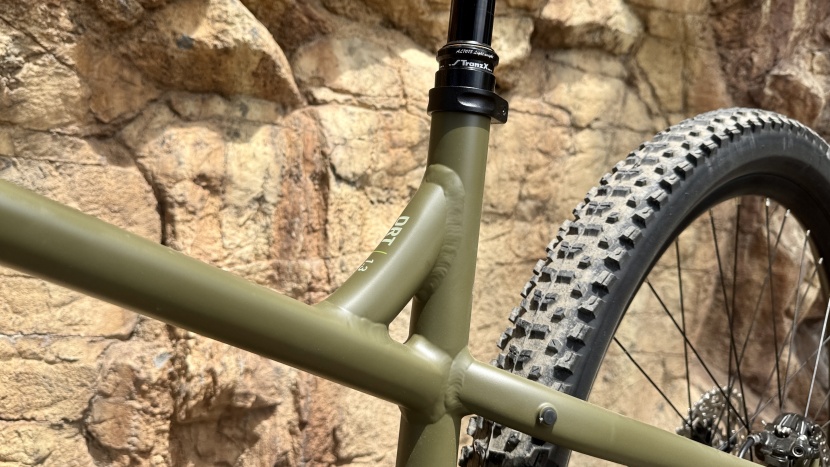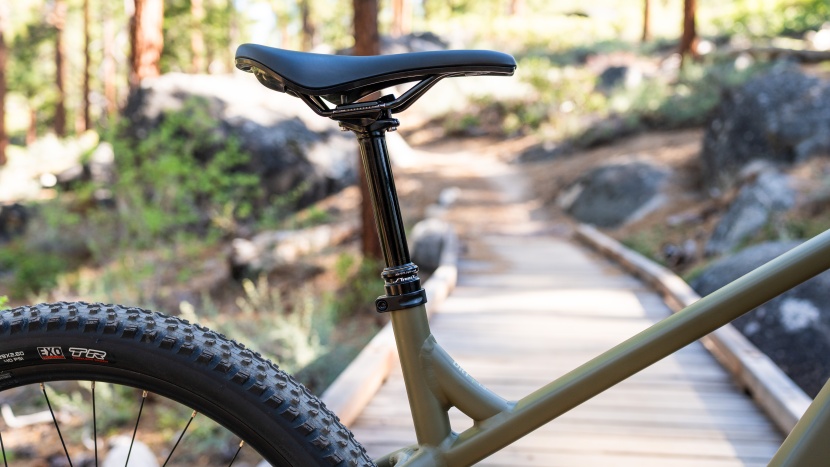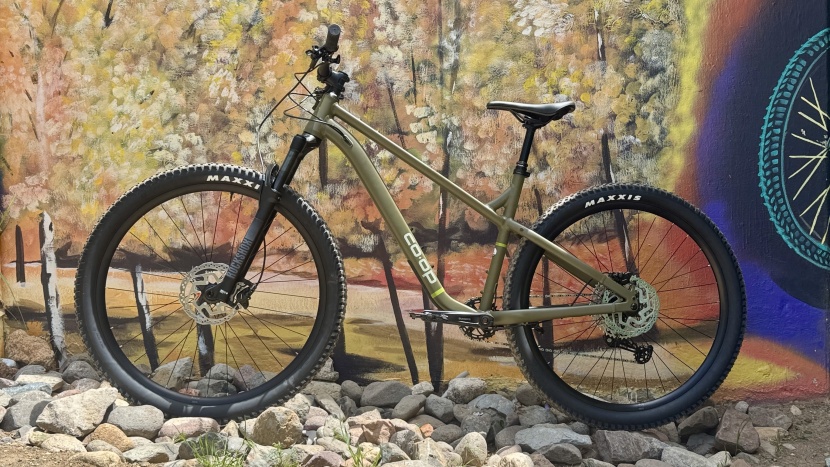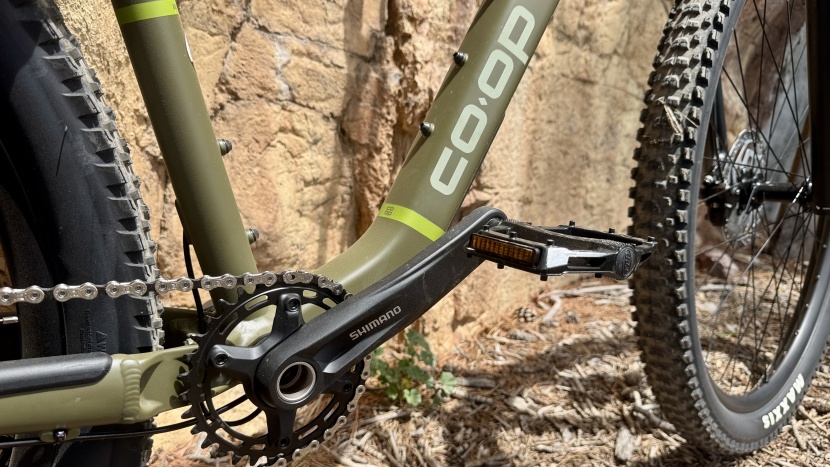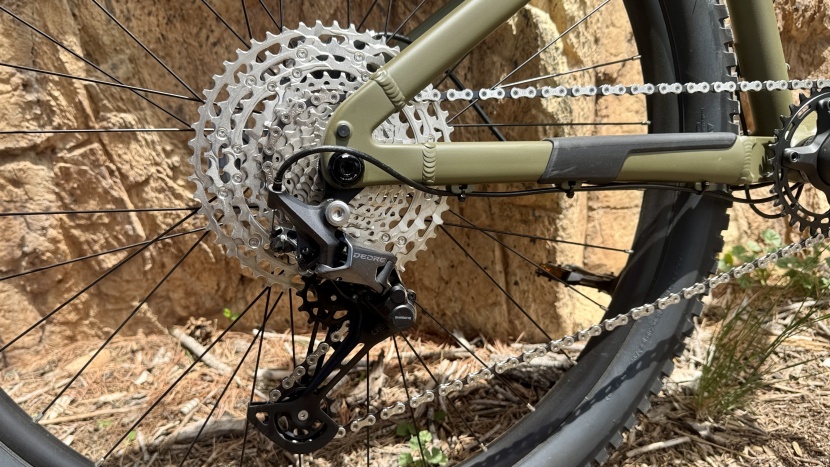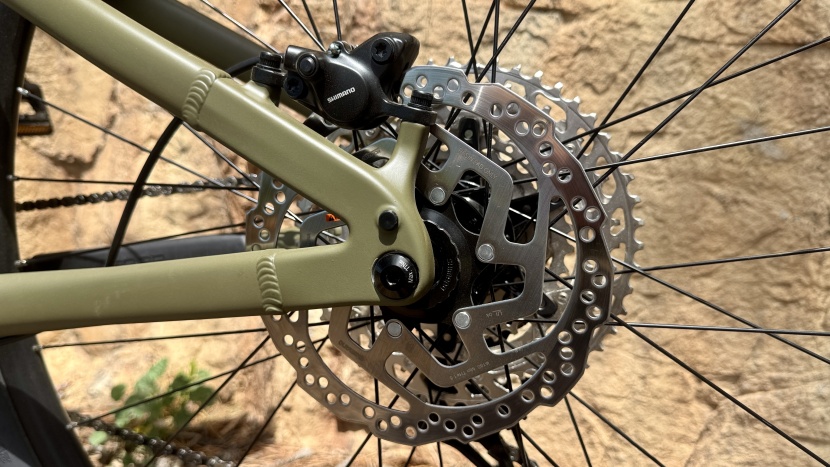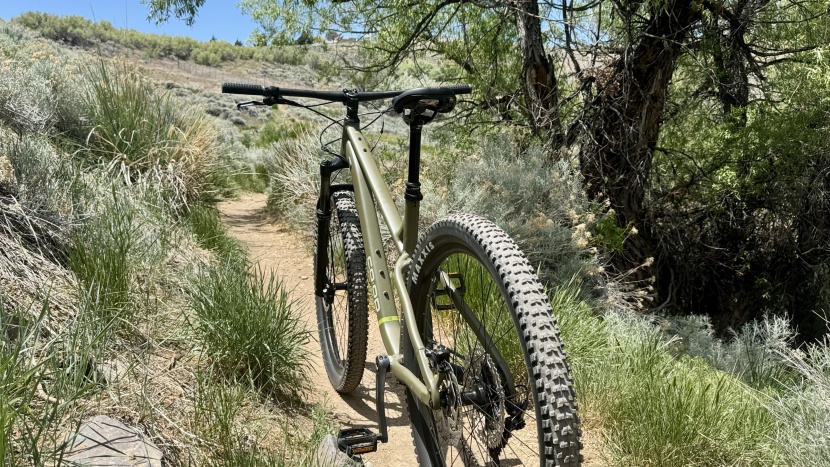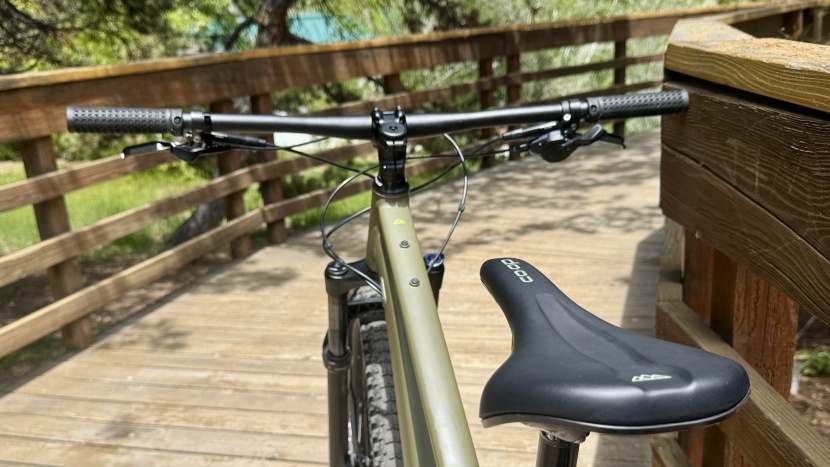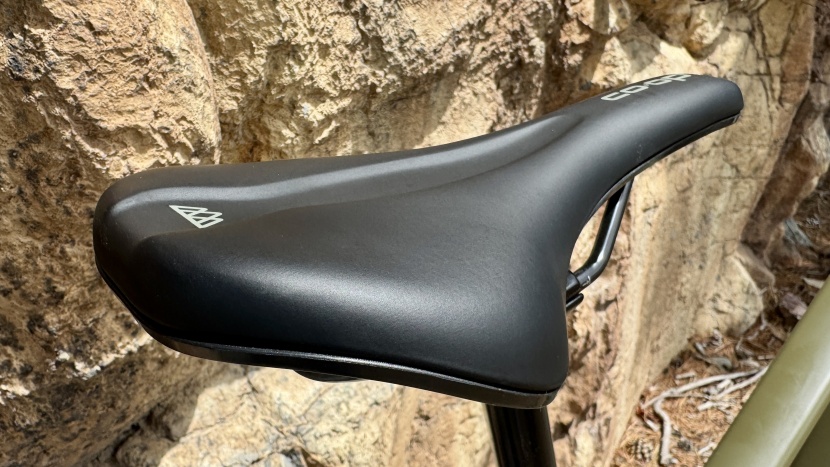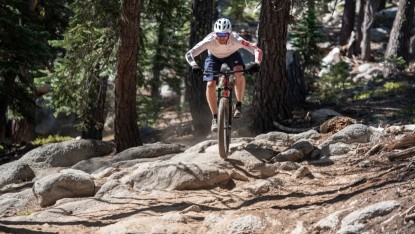
Our Verdict
Our Analysis and Test Results
Should I Buy This Bike?
We selected the Co-op DRT 1.3 because it's a nice enough bike to get out and enjoy the trails, and value-priced enough not to compete with your mortgage. Aspiring trail riders, weekend warriors, and those seeking fitness in the forest will appreciate the sensible parts spec and modern geometry. Mountain bikes don't have to be ridiculously expensive to be fun and rewarding, and the DRT is a testament to that. What I found particularly impressive about this build is that none of the parts distract from the bike's purpose. Too often, a budget bike has one or more parts that stand out as low points, creating a distraction from the joy of riding.
Fun Factor
This is really our most important metric in assessing the performance of a mountain bike. We venture out into the woods on two wheels to experience nature, get some exercise, and have fun after all. While this can be subjective, the bike's geometry and parts play a crucial role in just how much fun you can have off-road. The DRT 1.3 features a 67-degree headtube angle (66 degrees on XS and S), which slows steering and pushes the front wheel forward. This gives the bike (and rider) confidence in steeper terrain and allows you to ride faster in rough conditions with less fear of losing control and going over the handlebars. The RockShox Judy takes the edge off roots, rocks, and trail imperfections. This not only keeps your hands more comfortable but also increases your traction and, when standing off the saddle, provides suspension for the entire bike.
I found this bike to be really fun in the right terrain. As a hardtail with 5" of travel, it prefers life on the blue diamond trails and generally stays close to the ground. The tires provide enough traction to reach high speeds and push deep into corners. The bike comes equipped with innertubes but is tubeless compatible, meaning you can replace the tubes with sealant that lowers the rotational weight and removes the potential for pinch flats.
The DRT has a Trans-X seat dropper that allows the saddle to drop by 125mm with the push of a button. This feature allows you to ride at the proper saddle height, then quickly lower the seat to navigate more technical terrain, and have it pop back up without requiring you to take your hands off the handlebars. If your center of mass is too high, descending or riding tricky sections of trail can feel disconcerting. By lowering the saddle, you can ride faster with more confidence and dismount your bike less frequently. Since the advent of seat droppers, the posts have become longer and the frames have become shorter, allowing riders to drop deeper into the cockpit and conquer steeper terrain. This bike uses a particularly long seat tube, which doesn't allow for a long dropper, so it costs it a point here, but we're still grateful for the presence of the component.
Downhill
The DRT 1.3 is fairly competent when pointed downhill. The suspension fork and tires make the biggest contributions to its descending prowess. I liked how much traction I could get from the Rekon tires, especially once I set them up tubeless. The suspension fork is fairly basic, but the thru-axle provides stability and composure when you encounter the choppy sections of the trail. The aforementioned seat dropper makes a significant contribution to your ability to rip downhill. Having the saddle low not only lowers your center of mass but also allows you to push your weight behind the saddle and maintain stability.
The 67-degree head tube angle allows you to ride more demanding terrain than you might expect, and the 639mm stack height balances your weight distribution without feeling too aggressive. The steerer tube features 20mm of spacers, allowing you to adjust the handlebar's position up or down to suit your preference. The bike's wheelbase measures a long 1212mm, which bodes well for its stability at speed. The long wheelbase makes the bike less agile in other situations, but keeps it composed at the higher speeds you encounter with gravity's help.
The bike has a speed limit imposed by its design. While I found the bike more adept than its price tag would suggest, the reality of it being an aluminum hardtail is inescapable. At higher speeds and rougher terrain, the chassis stiffness transmits enough vibration to the rider that grabbing the brakes to enforce that speed limit feels natural. This isn't necessarily a negative, as the DRT balances its performance attributes and just isn't as confident heading downhill as most full-suspension mountain bikes. The relatively long 440mm chainstays help keep the rear end from bouncing around too much, but make it more difficult to lift the front end off the ground. I could jump the bike and get some air in appropriate situations, but I feel this bike prefers life closer to the ground.
I appreciated the higher volume 2.6" tires, and while they contribute to the bike's comfort and confidence, a front tire with larger, deeper tread would enhance the traction up front and maybe raise the speed limit a bit. The bike dips into corners and berms without complaint and feels like it requires a bit more upper-body strength to really push it around. This is likely due to the bike's weight of over 33 pounds.
Climbing
The DRT 1.3 puts you in a comfortable position for climbing. The frame has a 77-degree effective seat tube angle, positioning you much further forward than bikes of only a few years ago. This geometry keeps you directly above the pedals, allowing you to put the power to the ground more effectively. Coupled with the bike's longer chainstays, it's challenging to find a situation where your weight falls behind the rear axle. This lets you stay seated and take full advantage of the 510% gear range from the Deore 12-speed drivetrain. The reach measures 475mm, which allows you to open your chest and breathe deeply while ascending.
The upright disposition of the front end helps you keep your eyes on the trail, but the bike resists your aggressive climbing efforts. It feels like the bike prefers the slow and steady climb to the more spirited output you might exert on a lighter bike with shorter chainstays. Uphill cornering isn't the DRT's strong suit, but it did well in all but the sharpest corners, where the bike's extended wheelbase felt like it was lumbering. In moderate terrain, the geometry allows you to push your limits, and it climbs exceptionally well. However, it didn't excel in technical climbing, as the front end was harder to elevate, and we sometimes struggled with traction due to the rigid rear end.
Build
I'm admittedly spoiled when it comes to bike specs and the bikes I get to test at GearLab, but I'm not elitist. Sometimes, the most expensive, top-of-the-line equipment isn't the best performing, and similarly, the base models may have real performance advantages on the trail. What we look for in a budget-friendly mountain bike is a build that allows for a moderately high level of performance, incorporates technology that makes a difference, and eschews gimmicky features and exotic materials. When we decided to test this bike, we looked carefully at the build of each DRT model and chose the 1.3 because we felt it represented the best value. The 1.1 and 1.2 models utilize Suntour forks, which we're less fond of, as they hinder performance. Additionally, they don't include dropper seatposts or drivetrains that feel robust enough for real mountain usage.
Fork - Our test bike came equipped with a 120mm RockShox Judy TK Solo Air. This fork uses a single air cartridge damper with a lockout and ample adjustability for riders between 120 and 220 pounds. The fork features a 15x110mm thru-axle, lockout, and adjustable rebound damping. The fork performed well for our test riders, weighing between 140 and 180 pounds, despite using 30mm stanchions. Typically, small-diameter stanchions like this will produce a flexy chassis that hampers the fork's performance, but we had no complaints at this price point.
Drivetrain - The DRT 1.3 uses a Shimano Deore 12-speed derailleur and shifter paired with a Deore 11-51 cassette. A 32-tooth chainring provided us with the gearing to conquer the hills and avoid running out of gears when ripping downhill. The shifting was precise and worked well under load; we also found the ergonomics of the shifter to be near ideal.
Brakes - The bike comes to a stop courtesy of Shimano MT200 hydraulic disc brakes. The dual-piston calipers use mineral oil to squeeze the 180mm center-lock rotors. While the brake levers are longer than we prefer, there were times when the braking force we wanted required more than a single digit on the lever, and these levers allow that.
Wheels - The Co-op branded rims are tubeless-compatible and come with tubeless tape pre-installed. In this day and age, I find tubeless compatibility imperative. The Shimano hubs utilize 110 mm spacing up front with a 15mm axle, and the rear hub features standard 148mm boost spacing with a 12mm axle. The freehub is unremarkable in terms of engagement or noise.
Tires - A notable feature of this bike is its tires, specifically the tubeless-ready Maxxis Rekon 29 x 2.6, which features a dual-tread compound. In some ways, the tire volume gives you a bit of cheat code off-road; its width and contact patch provide additional traction. The flip side is that they might be a bit slower and more resistant to rolling, but that didn't feel like an issue.
Cockpit - A reasonably well-appointed cockpit serves as your primary interface with the bike and its main touchpoints. REI advertises this bike as having an 18mm rise handlebar with 8 degrees of sweep, and that's not what was spec'd on our test bike. The 31.8mm bar is almost straight, and we found it difficult to get comfortable on. A 45mm stem, 125mm dropper post, and Co-op steel rail saddle complete the package.
Conclusion
Mountain biking is a fun and invigorating way to get some exercise and experience the great outdoors. If you're on a budget or just want to devote fewer resources to trail riding, the DRT 1.3 is a good place to start and enough bike to grow with you for years. While nothing on the bike is particularly fancy, it's all good enough that it doesn't distract from the experience of riding trails. I liked the bike's modern geometry and sensible parts spec; it's fun without being pretentious. REI's network of stores should allow for easy test rides and service for years to come.


